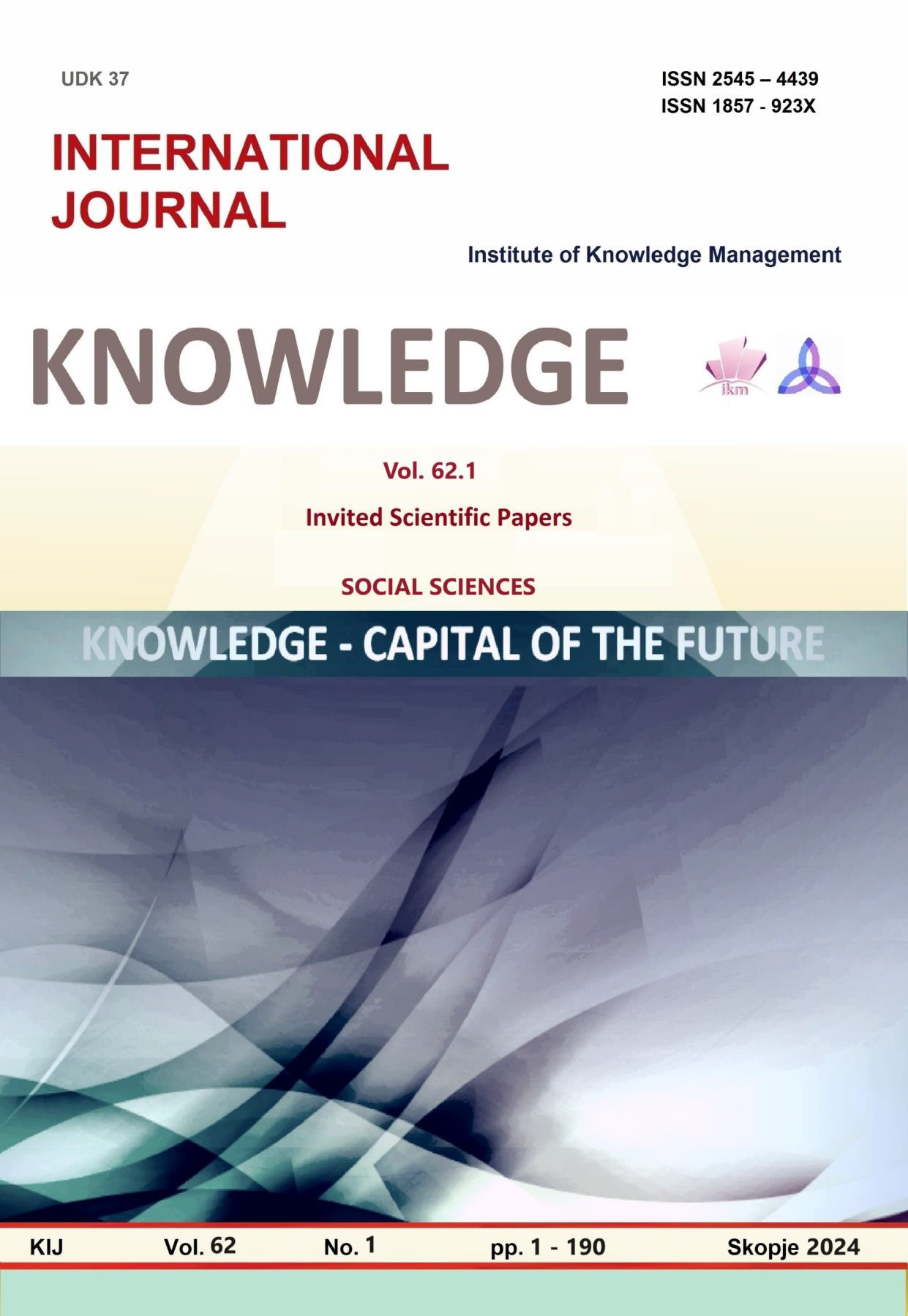THE TECHNOLOGY AND ENTREPRENEURSHIP EDUCATION AND INTERNATIONAL STANDARDS FOR TECHNOLOGY AND ENGINEERING LITERACY (STEL)
Keywords:
technology literacy, engineering literacy, technology education, educational standardsAbstract
Educational innovation and digital transformation are among the priorities in the Bulgarian educational policy for the period 2021-2030. The modernization of the secondary education in technology and entrepreneurship is related to the change of applied pedagogical technologies and models of education, enrichment of the learning content and subject-information environment. The directionality of the subject to the key competence of initiative and entrepreneurship and the multidisciplinary nature of technological literacy determine the need to constantly updating of the requirements for learning outcomes. The change of modern visions of technological education broadens the parameters of technological literacy and reflects on the selection and structuring of teaching content in the subject "technology and entrepreneurship" and the methodological toolkit for its mastery.
The Standards for Technological and Engineering Literacy (STEL), created by the International Technology Engineering Educators Association (ITEEA), outlines a significant role for technology education in the context of integrative education and the STEM approach and expands the notion of contemporary technology culture. The revised vision of technological literacy is concretized in three organizational structures and encompasses 24 underlying determinants. Engineering is identified with using scientific principles and mathematical reasoning to optimize materials and technologies in order to satisfy needs, according to defined criteria and given constraints.
In terms of content, comparing the distinct subject areas of technology and entrepreneurship with the engineering contexts outlined in STEL identifies an overlap of a number of underlying constructs. The comparative analysis outlines directions for enriching the curriculum of secondary technology education with knowledge and skills from the fields of artificial intelligence and robotics, automation and biotechnology. It confirms the relevance of the leading learning approaches established in technology and entrepreneurship curricula, such as learning by doing, learning by inquiry and discovery, project-based learning, and the modular-integrative approach. The new framework for effective technology education requires that the focus of the educational process should be on the formation of systems thinking, creativity, critical thinking, ethics, communication and teamwork skills.
Authenticity and stimulating activities are recommended when planning the learning process. Learning objectives should be related to the formation of a body of knowledge, skills and abilities that provide an understanding of the interactions between technology and societal development and enable students to use, and evaluate, current and emerging technologies. Achieving the stated goals requires an adequate, digitally provided learning environment and the application of appropriately constructed pedagogical design options.
References
Daugherty, M., Carter, V. & Sumner, A. (2021). Standards for technological and engineering literacy and STEM education. Technology and Engineering Teacher, 80(5), стр. 32-37. Retrieved 2023, from ITEEA: https://www.iteea.org/File.aspx?id=189314&v=ce361c78
Dugger, W. E. (2012). How Standards Interface with Curriculum and Instruction in Technology. Technology Education for the 21st Century: Bridging Theory and Practice. Palestine. Retrieved 2013, from http://www.iteea.org/Resources/
International Technology and Engineering Educators Association (2007). Standards for Technological Literacy: Content for the Study of Technology. Retrieved 2014, from https://www.iteea.org/Publications/StandardsOverview.aspx
International Technology and Engineering Educators Association. (2020). Standards for technological and engineering literacy: The role of technology and engineering in STEM education. Retrieved 2022, from https://www.iteea.org/STEL.aspx
Kozhuharova, D., Zhelyazkova M. (2021). SASHTNOST NA STEM OBUCHENIETO. E-spisanie „Pedagogicheski forum“(3), 19-28. doi:10.15547/PF.2021.016
MON (2015). Darzhavni obrazovatelni standarti. Retrieved 2016, from https://mon.bg/bg/100104
Ministerstvo na obrazovanieto i naukata. (2020). Uchebni planove i programi. Retrieved 2020, from https://mon.bg/bg/28
Ministerstvo na obrazovanieto i naukata (2020). Strategicheska ramka za razvitie na obrazovanieto, obuchenieto i ucheneto v Republika Bulgaria (2021-2030). Retrieved 2022, from https://web.mon.bg/bg/143
Reed P.,Love T.,Bartholomew S., Dooley K. (2022). Overview of Standards for Technological and Engineering Literacy (Other). Paper presented at 2022 ASEE Annual Conference & Exposition, Minneapolis, MN. https://peer.asee.org/41253.
Zoneva, L. (2021). Modeli za integrirane na informatsionnite i komunikatsionni tehnologii v obuchenieto. UI "Neofit Rilski"- Blagoevgrad.





